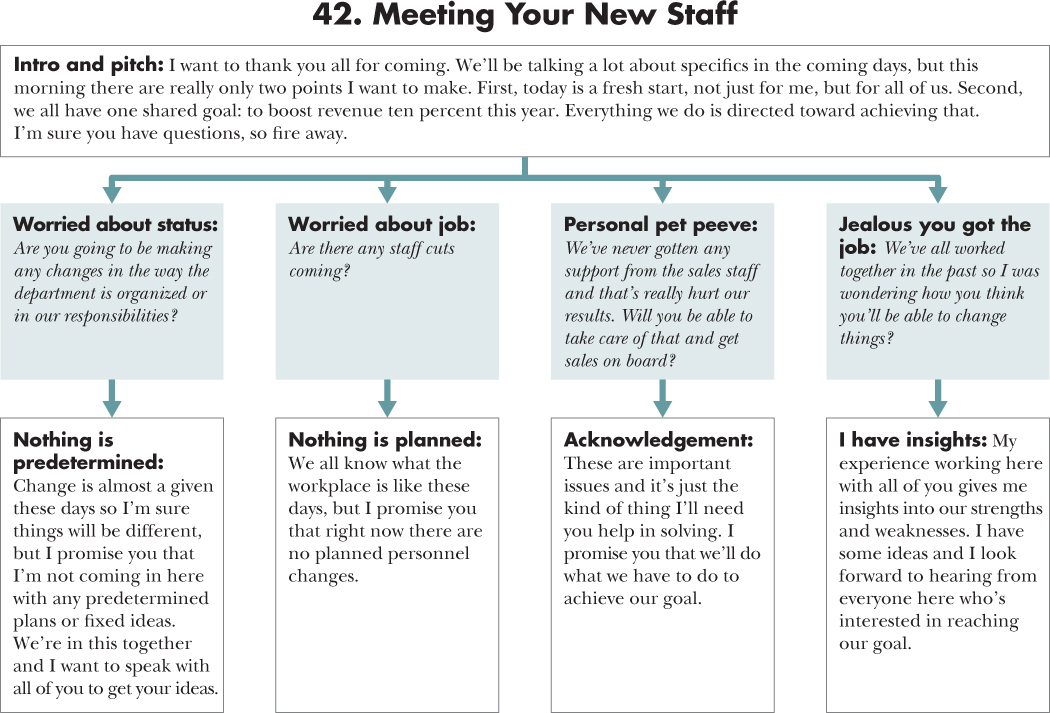42
Meeting Your New Staff
STRATEGY
When you meet your direct reports for the first time, the most important thing you need to accomplish is to plant the seeds of future teamwork and community. That's true whether you're a complete outsider, someone coming in from another part of the company, or you've been promoted to now lead your former peers. An obvious way to signal the importance of teamwork is to make sure your first “meet and greet” is done in a group setting. Avoid preliminary one‐on‐one meetings if possible, to avoid sending a message that some are “insiders” or more important than others. It's essential you avoid spin and propaganda. Don't ignore the hard truths or explain them away. You can expect people to ask questions to which they already know the answers in an effort to test your honesty and directness. Saying there will be no changes is prima facie absurd; your being there is a change. These people haven't been living in a bunker for the past few years; they know how business works.
TACTICS
- Attitude: Stress that this is a new day, not just for you, but for the whole team. The past is the past. From this moment you are all on the same path with the same goal.
- Preparation: Pay careful attention to your garb. You want to give yourself the appearance of leadership, while not putting too much distance between yourself and the rest of the team. If you're coming in from outside and are as a result largely uniformed about the staff, wear conservative, formal business attire. That means nothing flashy and no bling. If you're coming in from another department or have been promoted from the ranks, simply turn your attire up one subtle notch. For example, wear a suit if you usually used to dress in separates, don a jacket if you were previously always in shirtsleeves. You want everyone to know you're at a higher level, but you don't want to look like you just won the lottery or have forgotten your “roots.”

- Timing: This group introduction should take place as early in the week and in the day as practical. That will let you issue marching orders that can be acted on immediately, so the team is all pulling together from day one. End of week introductions could lead to weekend intrigue, gossip, and fear.
- Behavior: Acknowledge whatever fears are expressed and demonstrate openness to even the most self‐centered, small picture issues that are raised. Explain that the only stupid question is the one that goes unasked. You want everyone to feel that they are being heard and that you'll be open even to their own peculiar concerns.
ADAPTATIONS
This script can be modified to:
- Meet a new group of volunteers for a charitable effort you'll be leading.
KEY POINTS
- The most important thing you need to accomplish is to plant the seeds of future teamwork and community.
- Make sure your first “meet and greet” is done in a group setting.
- Avoid spin and propaganda.
- Acknowledge whatever fears are expressed and demonstrate openness to any issues that are raised.
